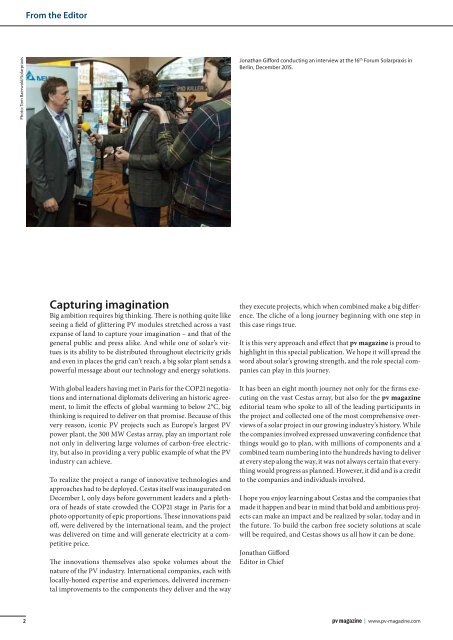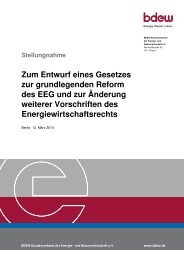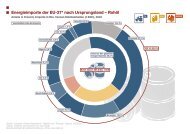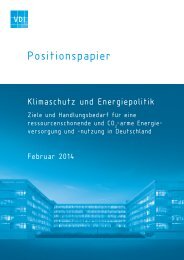Inside Cestas
1Zl7QBV
1Zl7QBV
Create successful ePaper yourself
Turn your PDF publications into a flip-book with our unique Google optimized e-Paper software.
From the Editor<br />
300 MW <strong>Cestas</strong> project<br />
Photo: Tom Baerwald/Solarpraxis<br />
Jonathan Gifford conducting an interview at the 16 th Forum Solarpraxis in<br />
Berlin, December 2015.<br />
Record project, in record time<br />
Project review: As 2015 draws to a close, a giant awakens. The 300 MW <strong>Cestas</strong> PV<br />
project has set records for a European solar project and employed a unique consortium<br />
approach to its design and construction. Germany’s Krinner played a crucial role in<br />
the supply of the ground screws and mounting structures along with providing vital<br />
expertise in terms of optimizing installation.<br />
Capturing imagination<br />
Big ambition requires big thinking. There is nothing quite like<br />
seeing a field of glittering PV modules stretched across a vast<br />
expanse of land to capture your imagination – and that of the<br />
general public and press alike. And while one of solar’s virtues<br />
is its ability to be distributed throughout electricity grids<br />
and even in places the grid can’t reach, a big solar plant sends a<br />
powerful message about our technology and energy solutions.<br />
With global leaders having met in Paris for the COP21 negotiations<br />
and international diplomats delivering an historic agreement,<br />
to limit the effects of global warming to below 2°C, big<br />
thinking is required to deliver on that promise. Because of this<br />
very reason, iconic PV projects such as Europe’s largest PV<br />
power plant, the 300 MW <strong>Cestas</strong> array, play an important role<br />
not only in delivering large volumes of carbon-free electricity,<br />
but also in providing a very public example of what the PV<br />
industry can achieve.<br />
To realize the project a range of innovative technologies and<br />
approaches had to be deployed. <strong>Cestas</strong> itself was inaugurated on<br />
December 1, only days before government leaders and a plethora<br />
of heads of state crowded the COP21 stage in Paris for a<br />
photo opportunity of epic proportions. These innovations paid<br />
off, were delivered by the international team, and the project<br />
was delivered on time and will generate electricity at a competitive<br />
price.<br />
The innovations themselves also spoke volumes about the<br />
nature of the PV industry. International companies, each with<br />
locally-honed expertise and experiences, delivered incremental<br />
improvements to the components they deliver and the way<br />
they execute projects, which when combined make a big difference.<br />
The cliche of a long journey beginning with one step in<br />
this case rings true.<br />
It is this very approach and effect that pv magazine is proud to<br />
highlight in this special publication. We hope it will spread the<br />
word about solar’s growing strength, and the role special companies<br />
can play in this journey.<br />
It has been an eight month journey not only for the firms executing<br />
on the vast <strong>Cestas</strong> array, but also for the pv magazine<br />
editorial team who spoke to all of the leading participants in<br />
the project and collected one of the most comprehensive overviews<br />
of a solar project in our growing industry’s history. While<br />
the companies involved expressed unwavering confidence that<br />
things would go to plan, with millions of components and a<br />
combined team numbering into the hundreds having to deliver<br />
at every step along the way, it was not always certain that everything<br />
would progress as planned. However, it did and is a credit<br />
to the companies and individuals involved.<br />
I hope you enjoy learning about <strong>Cestas</strong> and the companies that<br />
made it happen and bear in mind that bold and ambitious projects<br />
can make an impact and be realized by solar, today and in<br />
the future. To build the carbon free society solutions at scale<br />
will be required, and <strong>Cestas</strong> shows us all how it can be done.<br />
Jonathan Gifford<br />
Editor in Chief<br />
Photo: Krinner<br />
Krinner President Klaus Krinner at the <strong>Cestas</strong> array<br />
at its opening on December 1, 2015.<br />
Accuracy counts, and pays dividends.<br />
This was a key principle behind the<br />
approach employed by the Krinner team<br />
in the realization of the 300 MW <strong>Cestas</strong><br />
project, outside of the French city of<br />
Bordeaux.<br />
To achieve the precision required to<br />
deliver the project on time and on budget,<br />
Krinner employed a suite of innovative<br />
technologies and methods, from the<br />
ground up. Krinner used aerial drones<br />
to collect surface data from the site. Soil<br />
data were collected, allowing a plan to<br />
be developed to prepare the surface, and<br />
crucially a drainage system, to deliver a<br />
mud-free working environment during<br />
installation.<br />
Krinner then turned to the design.<br />
Using the data collected on-site, engineers<br />
from the German family-owned<br />
company designed the ground-mounted<br />
array. The Krinner Cloud remote control<br />
and monitoring system then communicated<br />
with positioning robots on-site<br />
to mark out the design. Ground screw<br />
installation robots then carried out the<br />
installation with a high level of precision<br />
– using GPS positioning. The support<br />
frames were then secured in place and the<br />
Krinner Flex V racking system installed,<br />
allowing for fast module installation.<br />
“The advantages of this process are in<br />
the enormous installation speed of up to<br />
four megawatts peak per day and team,”<br />
explains Krinner CEO Michael Tritschel.<br />
“This way the Project could be realized<br />
in only eight months of construction and<br />
produce power a lot sooner than a solar<br />
park installed using the usual methods.”<br />
Tritschel adds that the consortium<br />
itself, which brought together Eiffage<br />
(Clemessy) as overseeing EPC with<br />
Schneider Electric and Krinner, functioned<br />
“very well” and provides an example<br />
for how complementary companies<br />
can come together to deliver large projects<br />
efficiently.<br />
“This is certainly one viable way for<br />
executing big projects,” says Tritschel.<br />
“Could this consortium realize other<br />
large scale projects? I believe yes, because<br />
of the individual expertise and the mix<br />
it made.”<br />
Looking forward, while Krinner<br />
remains committed to the large-scale<br />
PV space, with Tritschel describing it as<br />
vital if CO2 emissions are to be reduced<br />
on the global stage, it acknowledges that<br />
the broader trend is towards smaller<br />
and more distributed PV projects in the<br />
future.<br />
“As in many segments, big is beautiful,”<br />
says Tritschel. “We are currently involved<br />
in larger projects – not in Europe but in<br />
Chile.” The Krinner CEO also acknowledges<br />
that there is a strong trend within<br />
the large-scale PV project segment<br />
towards the deployment of tracking technology,<br />
however that is largely limited to<br />
sunnier climes. Krinner has developed<br />
a single-axis horizontal tracker to meet<br />
this demand.<br />
In many ways <strong>Cestas</strong> has proven to be<br />
an innovation driver and a lighthouse<br />
project for the companies involved and<br />
for the PV industry more widely. It is<br />
an example of the principles behind the<br />
transformative power of PV. Having supplied<br />
and installed over 2.4 GW of solar<br />
projects globally, for Krinner the <strong>Cestas</strong><br />
is a significant landmark in that it is the<br />
largest project in its history.<br />
<strong>Cestas</strong> project at a glance<br />
••<br />
Maximum power output: 300 MWp<br />
••<br />
Sufficient electricity to power 110,000 households<br />
••<br />
Displaces 230,000 tons of CO2 annually<br />
••<br />
Comprises 25 special purpose vehicles (SPVs)<br />
••<br />
Approximately 1 million modules<br />
••<br />
300 hectares (equivalent of 600 football fields)<br />
••<br />
200 transformer units<br />
••<br />
Covers 2.6 million m 2<br />
••<br />
Ground mounting and module installation<br />
achieved in 8 months<br />
••<br />
200,000 ground screws installed<br />
••<br />
326 km of support frames<br />
••<br />
Stages of installation<br />
••<br />
Soil condition assessment<br />
••<br />
3D terrain map<br />
••<br />
Data inspection and documentation at Krinner<br />
HQ<br />
••<br />
Krinner Cloud screw positioning<br />
••<br />
4 MWp of module installation per crew per day<br />
2<br />
| www.pv-magazine.com | www.pv-magazine.com<br />
3








